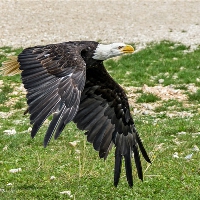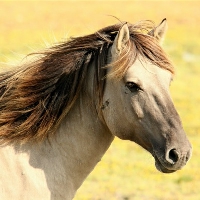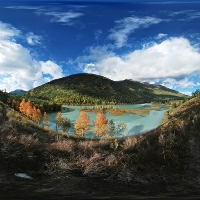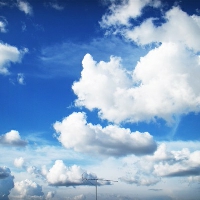一本教会你“做对”题的6级阅读书 day19 passage1
Passage 1 No Hiding Place?
能量去哪里了? 《经济学人》
No hiding place?
El Nio versus Nia
It may seem unreasonable at the moment, as northern Europe,
Asia and parts of America shiver in the snow,
but 2010 may well turn out as the hottest year on record.
Those who doubt that greenhouse gases are quite the problem
have taken comfort from the fact that the Hadley Centre,
part of Britain's Meteorological Office,
reckons the warmest year since records began was 1998.
Twelve years without a new record would, the sceptics reckon,
be rather a large pause in what is supposed to be a rising trend.
Computer modelling by the Met Office, though,
gives great chances of the pause being broken.
The fact that no record high happened in the 2000s does not mean
[01:01]that there was no warming over the decade-trends at scales coarser
[01:06]than the annual continued to point upwards,
[01:09]and other authorities suggest there have been record years during the period.
[01:15]Nor was the length of time without an annual record exceptional.
[01:20]Models simulating centuries of warming normally
[01:24]have the occasional decade in which no rise in surface temperatures
[01:29]is observed. This is because heat can be stored in other parts of the system,
[01:35]such as the oceans, for a time,
[01:38]and thus not show up on meteorologists' thermometers.
[01:43]Indeed, one reason for thinking that the coming year
[01:47]will be hotter than all known previous years is
[01:50]that the tropical Pacific is currently dumping heat. This phenomenon,
[01:56]by which heat that has been stored up in the sea over the previous few years
[02:01]is released into the atmosphere,
[02:04]is known as El Nio. A strong Nio contributed to the record temperatures in 1998.
[02:12]In 2007 and 2008 the opposite phenomenon, a cooling Nia, was happening.
[02:20]That goes some way to explaining why those years
[02:24]were chilly by the standards of the 2000s.
[02:28]And on top of El Nio, there is the sun.
[02:33]The sun's brightness fluctuates over an 11-year cycle.
[02:37]Though the fluctuation is not vast,
[02:40]it is enough to make a difference from peak to trough.
[02:45]In 2009 the sun was at the bottom of its cycle.
[02:49]Unless it is behaving particularly strangely, it should,
[02:53]over the next 12 months, begin to brighten.
[02:57]The Decadal Prediction System
[03:00]The Met Office's forecast was made using the Decadal Prediction System,
[03:06]or DePreSys. Climate models are normally used to show
[03:12]how the climate's behaviour will respond to changes in things
[03:17]like greenhouse-gas levels. But though a model's response will,
[03:22]it is hoped, be similar to the real climate's, models are caricatures,
[03:27]not portraits. Trying to force one into a state that looks exactly like
[03:33]the real climate at a specific time, as prediction requires, will distort it,
[03:39]and it is likely to misbehave as a result.
[03:42]DePreSys is an attempt to work round this "initialization" problem to
[03:48]give the model's caricature not just an all purpose resemblance
[03:53]to the way the real climate behaves, but one that captures its pose
[03:58]and expression at a particular moment.
[04:01]In 2007 the first study using DePreSys correctly predicted
[04:08]that there would be a few more years which would set no records.
[04:12]After this, it said, there would be a definite rise in temperature.
[04:18]More recently, Dr Smith and his team have been using clusters of computers
[04:23]around Britain to run multiple models with slightly different initial conditions.
[04:30]Four-fifths of these runs suggest 2010 will be warmer
[04:35]than any previous year-which could be taken as odds of four-to-one on.
[04:42]The techniques are still in their infancy.
[04:45]But they are at least making predictions that can be checked.
[04:49]Balancing the books
[04:51]Dr Smith and his colleagues are trying to predict some of
[04:56]the natural variability to come.
[04:59]Kevin Trenberth of America's National Centre for Atmospheric Research
[05:04]wants to understand in detail the natural variability.
[05:09]His quest gained unexpected prominence when one of his forcefully
[05:14]expressed e-mails on the subject found its way into the public domain
[05:19]as one of thousands of e-mails from the Climatic Research Unit of
[05:24]the University of East Anglia in the "climategate" furor of November 2009.
[05:31]Dr Trenberth was not saying that the relatively unwarmed 2000s
[05:37]were particularly exceptional. Instead, he was saying that,
[05:41]given the satellites and measurement networks
[05:44]that are being installed to monitor the climate,
[05:47]it should now be possible to identify the places and processes
[05:52]that hide energy from the eyes of climatologists.
[05:57]That would make it possible to determine
[05:59]what has actually happened to the energy trapped
[06:02]by increasing levels of greenhouse gases.
[06:06]For the first part of the decade this turns out to be possible.
[06:11]From 1998 to 2003, although surface temperatures were not rising,
[06:17]a lot of energy was taken in by the oceans.
[06:21]This is borne out by the rise in sea level during the period,
[06:25]which matches (once the additional effects of melting glaciers
[06:30]and ice sheets are taken into account) the expansion of the water
[06:34]in the oceans caused by this heating. Until the middle of the 2000s,
[06:40]therefore, the sums seem to balance.
[06:43]It is after that that the problem comes.
[06:46]Runoff's role in the rising sea level increases,
[06:51]meaning the fraction attributable to expansion,
[06:55]and thus the amount of heat taken up by the sea, has fallen.
[07:00]The missing heat must therefore be going somewhere else.
[07:04]One possibility is that it is being reflected back into space
[07:08]by changes in cloud cover. The data, however, seem to say no.
[07:14]America's CERES programme, the result of observations
[07:19]by seven different instruments on six different satellites,
[07:24]suggests the Earth has actually absorbed more energy
[07:28]and reflected away less over the past few years,
[07:32]rather than the other way round. It is all rather mysterious.
[07:37]Nevertheless, while there is a lot of scepticism in,
[07:42]around and about climate science,
[07:45]none of it is aimed at the first law of thermodynamics,
[07:49]which says that energy cannot be created or destroyed.
[07:53]The energy that the sun delivers to the Earth
[07:56]must therefore be equal to the energy
[07:58]that is reflected back into space, plus that re-emitted
[08:02]as radiation, plus that stored in some part of the atmosphere,
[08:07]the oceans or the land.
[08:10]The fact that the books cannot currently be balanced
[08:14]is therefore an admission of ignorance-an ignorance that better,
[08:19]future measurements should help abolish. That, in turn,
[08:24]should allow predictions of what the climate will do next,
[08:28]for good or ill, to become significantly better.
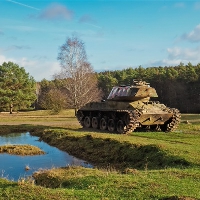 淡忘回忆 2022-10-12 23:12:38
淡忘回忆 2022-10-12 23:12:38

